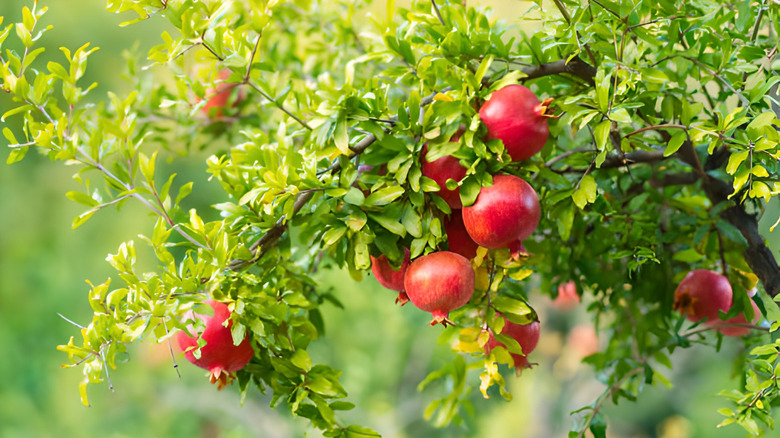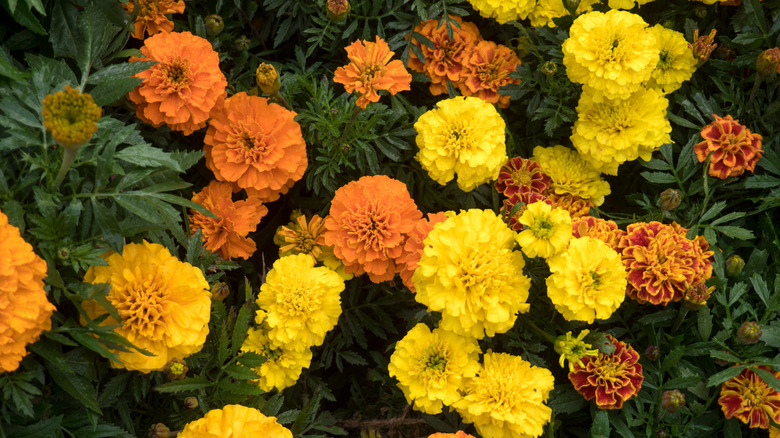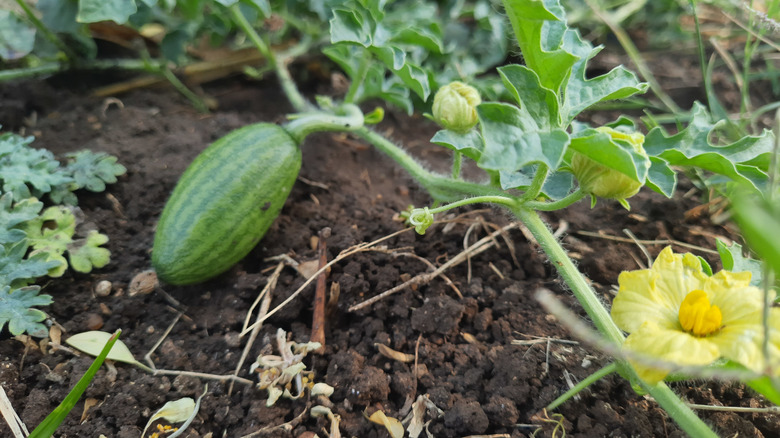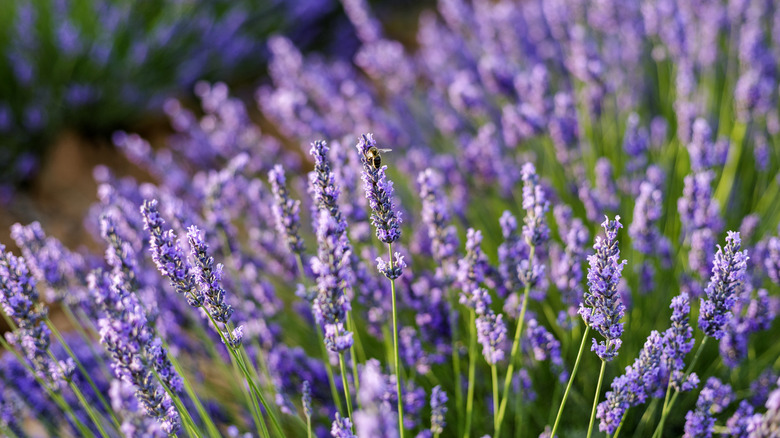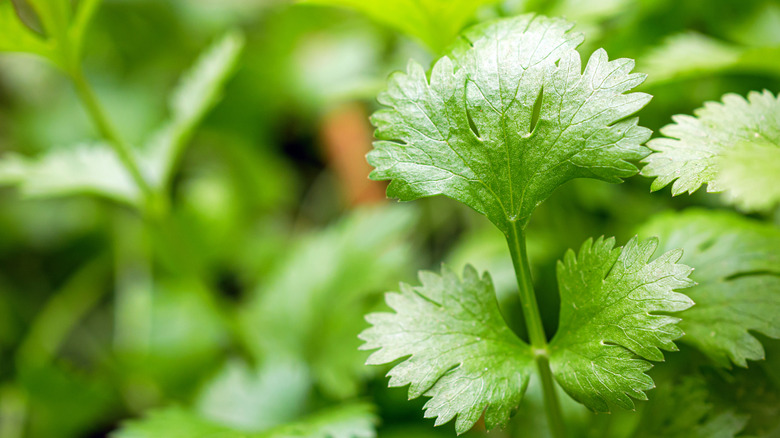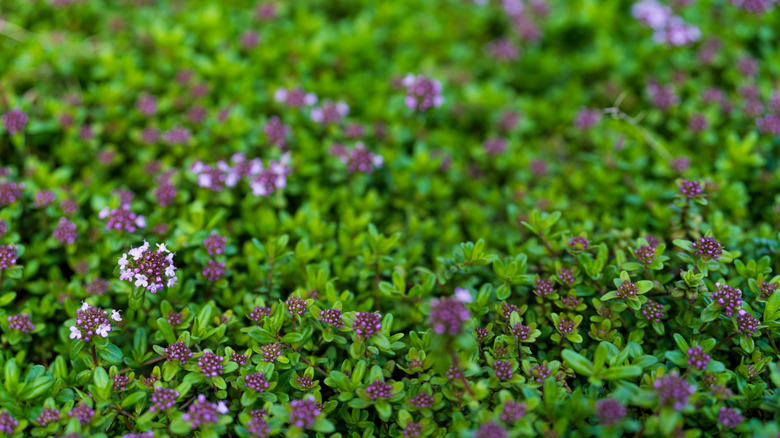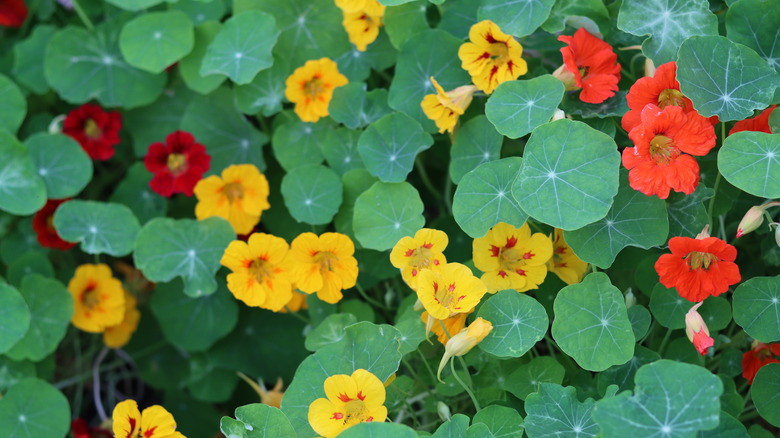The 10 Best Companion Plants For A Healthy Pomegranate Tree In The Garden
Pomegranates (USDA Plant Hardiness Zones 7 to 10) have become popular fruit trees thanks to their rich taste and immense health benefits. And while they are grown mostly for their fruit, pomegranates also make fabulous ornamental plants. The best part? They are easy to grow and can grow in pretty much any soil type. However, keeping your pomegranates healthy is another story, as these plants are vulnerable to many pests and diseases. And that is exactly where companion plants can help. Companion plants can naturally deter pests, attract pollinators, improve soil conditions, and increase fruit yield.
For instance, you can plant dill near your pomegranates to ward off pests, creeping thyme to attract pollinators and to work as a living mulch, and lupine as a soil builder and nitrogen fixer. Similarly, you can add comfrey as a nutrient accumulator and melons as an extra crop, and to attract pollinators. And if you want to increase the effectiveness of your companion plants, you might want to arrange them in a tree guild. It is a centuries-old planting technique that can boost your fruit tree's health and harvest.
Dill
Dill (Anethum graveolens) is an aromatic herb that is often recommended as an insectary plant in companion plantings, and it is exactly what it sounds like. Its flowers attract many pollinators and beneficial insects, including both predatory and parasitoid insects like tachinid flies, hoverflies, lacewings, and ladybugs, to the garden. You can plant dill reliably anywhere in North America, from zones 2 to 11. It does best in soil that drains well, is slightly acidic, and has plenty of organic material.
Marigolds
Aphids are one of the most common and widespread pest problems for pomegranate orchards, and that is where growing marigolds (Tagetes spp.) alongside your fruit trees can help. Their strong scent helps keep aphids and many other pests, like beetles and whiteflies, away from plants. Also, they attract beneficial predatory insects, which can help bring pest numbers down even further. And just like dill, you can grow them from zones 2 to 11, all over the US. However, keep in mind that marigolds are somewhat toxic, so you might want to keep pets and kids away.
Tree lucerne
Tree lucerne (Chamaecytisus prolifer), also known as tagasaste, is an evergreen shrub or small tree that can be grown reliably in zones 8 to 10. Its companion plant benefits come from its ability to fix nitrogen in the soil, which can help improve soil fertility. You can plant it as a long-term nitrogen-fixing plant near your pomegranates, and since it is a perennial, it will thrive for many years. It grows rather fast and, once established, has really good heat, drought, and cold tolerance.
Watermelon
The crisp, juicy flesh of a watermelon (Citrullus lanatus) makes it a perfect treat during hot, scorching summer days. And if you grow them under your pomegranate plants, you will get the added benefits of an excellent groundcover, as well. They are excellent at suppressing weeds, so they can help reduce resource competition. And the best part? It only takes about 40 to 50 days to mature from planting. Also, being an annual, you don't have to worry about USDA zones with watermelons. Just plant them when the weather is warm and there is no chance of frost.
Lavender
Even though pomegranates are self-pollinated plants, pollinators like bees and butterflies are still helpful for them, and that is where growing lavender (Lavandula angustifolia) alongside your fruit trees can help. Lavender attracts a number of pollinators and beneficial insects. These include honeybees, butterflies, bumblebees, ladybugs, and praying mantises. You can plant it reliably anywhere in zones 5 to 9 in a sunny, dry, and well-drained spot. Just don't make the lavender pruning mistake that can slow (or even stop) its growth.
Cilantro
Cilantro (Coriandrum sativum) is an herb that some people love while others hate. But beneficial insects definitely love it. Its tiny flowers are very attractive to parasitic wasps and syrphid flies, which can help protect pomegranate plants from pests. Also, it has a pungent aroma, thanks to the linalool, a compound present in its essential oil that is effective against pests. So, planting it with other aromatic plants, like basil and chives, can reduce pest damage to the intended fruit tree crop. It is an annual; you can plant it in spring and fall.
Sundial lupine
If you are looking for a nitrogen-fixer for your pomegranates but don't want tagasaste, which is quite a sizeable shrub, you can try planting sundial lupine (Lupinus perennis). Being a leguminous plant, it helps fix nitrogen in the soil, increasing fertility. However, it only grows to about 2 1/2 feet tall. Other than that, it is also quite pollinator-friendly, providing food to bees and butterflies. You can grow it in zones 3 to 8 in a sunny spot with good drainage and dry sandy soil.
Creeping thyme
Weeds can also be another problem for pomegranate trees, especially the young ones. Some even compete very aggressively for resources. But don't worry. It is a simple fix with groundcovers like creeping thyme (Thymus serpyllum). You can plant it in zones 4 to 9. One of the good things about creeping thyme is that it is ornamental when blooming and stays green even in winter. It is pretty good at suppressing weeds, and when it blooms in early summer, its multicolored flowers attract pollinators, too.
Garden nasturtium
Another companion plant for pomegranates that grows in zones 2 to 11, the common or garden nasturtium (Tropaeolum majus) works by acting as a trap crop and luring away the pests from your other plants. You can also use them as a groundcover to help reduce weed pressure and retain moisture in the soil. They grow best in sunny spots with some shade in summer and in average to poor well-drained soil. Planting them in rich soil will reduce flowering, which is not desirable if you also want their ornamental value.
Fava beans
Fava beans (Vicia faba) are one of those bean plants that are easy to grow, and you can plant them as short-term nitrogen fixers with pomegranates to increase soil fertility. However, they are only hardy if you live in cool regions where daytime temperatures don't exceed 70 degrees Fahrenheit. In other regions, they can be grown as annuals. They can also help reduce soil erosion and, to some degree, suppress weeds near your fruit trees. Also, when they bloom in spring and summer, they attract quite a few honeybees that can also help pollinate your pomegranate plants.
Comfrey
Comfrey (Symphytum officinale) is hardy to zones 4 to 8, and it is adaptable to most conditions. Once established, it can outcompete weeds, but its main companion plant benefit comes from its ability to accumulate nutrients. It has deep roots and can accumulate potassium even in low-fertility soils. And if you let its leaves fall and decompose, they will fertilize the soil. Other than that, it also attracts pollinators with its sweet-scented, beautiful blooms. For best results, you should plant it in moist, well-drained soil with full sun.
